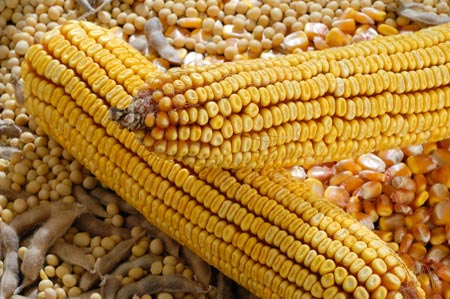 (Agriculture.com) – This Monday, the history of corn and soybean markets will change. After being traded on the floor of the Chicago Board of Trade for 124 years, the yelling and screaming to buy and sell ag commodities futures contracts will go silent as the Exchange switches to all electronic trading.
(Agriculture.com) – This Monday, the history of corn and soybean markets will change. After being traded on the floor of the Chicago Board of Trade for 124 years, the yelling and screaming to buy and sell ag commodities futures contracts will go silent as the Exchange switches to all electronic trading.
The agricultural options contracts will remain traded on the floor, with a physical location change within the CME Group Exchange building scheduled for September, according to CME officials.
Open outcry volume has decreased by 75% since 2008. This year, open outcry futures contracts now make up only 1% of the company’s business.
The S&P 500 Standard Futures pit, which continues to provide an important venue for trading the underlying futures contract for the S&P 500 options on futures contract, will remain open, as will all options pits in both locations except for the DJIA ($10) and NASDAQ 100 options, according to the CME Group press release.
In addition, in Chicago, all options pits will be located on a single floor in the company’s Financial Room by September.
A QUICK HISTORY
The Chicago Board of Trade Exchange opened in 1848. Corn, wheat, and oats open outcry futures started trading in 1877. Soybean open outcry futures opened in 1936.
Though it’s not a swift change for traders and customers, the 12-decade tradition of farm markets is creating a nostalgic reflection from some floor traders.
Matt Pierce, Futures International LLC floor trader at the CME Group Exchange, says though it won’t change his job dramatically, he respects the history of the industry.
“This has been a long-time coming. Though depressing to see an era end, it’s time,” Pierce says.
Scott Shellady, TJM Investments senior vice president and CME Group floor trader, says that it’s important to understand the reality of the floor closing.
“The real story here is that while we don’t need stocks and bonds to live, we do need food. And, by going all electronic, we have basically turned over sustenance to the cloud with the algorithmic traders and high-frequency programmers. Electronic trading and technology may still be in its infancy, and arguably we are in the Wild, Wild West. I think that is the danger and the real underlying story,” Shellady says.
While the media want to make a big deal of the closing of the pits that started the CBOT, it’s important to note that wheat, soybeans, and corn will still be traded, just electronically, Shellady says.
“It is like a furniture store no longer making furniture by hand and using machines. Yes, there are some displaced workers, but 95% of them have left already,” Shellady says.
Pierce sees the impact of the futures pit closing as minimal. “I’m almost all options so the close doesn’t affect me. From the brokerage side, it’s a minimal change at best. Old-school guys will be forced to retire or find a new career. If you had any foresight and moved to options, you are OK. I will just move to the new room and expand my coverage for clients into hogs, cattle, and other CME products,” Pierce says.
It is important for the public to know that the decision to go electronic is a customer-based one – not an exchange one, the traders say.
“The floor population has obviously dwindled, but there is no way to tell how many new electronic customers have taken their place somewhere in cyberspace,” Shellady says.
Shellady adds, “While I have seen an exchange convert to all electronic (I was in London on the LIFFE when it went all electronic in 1997 – 18 years ago), I am not afraid of the change, nor will it alter my daily routine too much. We are moving the open outcry options pits into the financial room over the next few months. That is the change – for the time being.”




